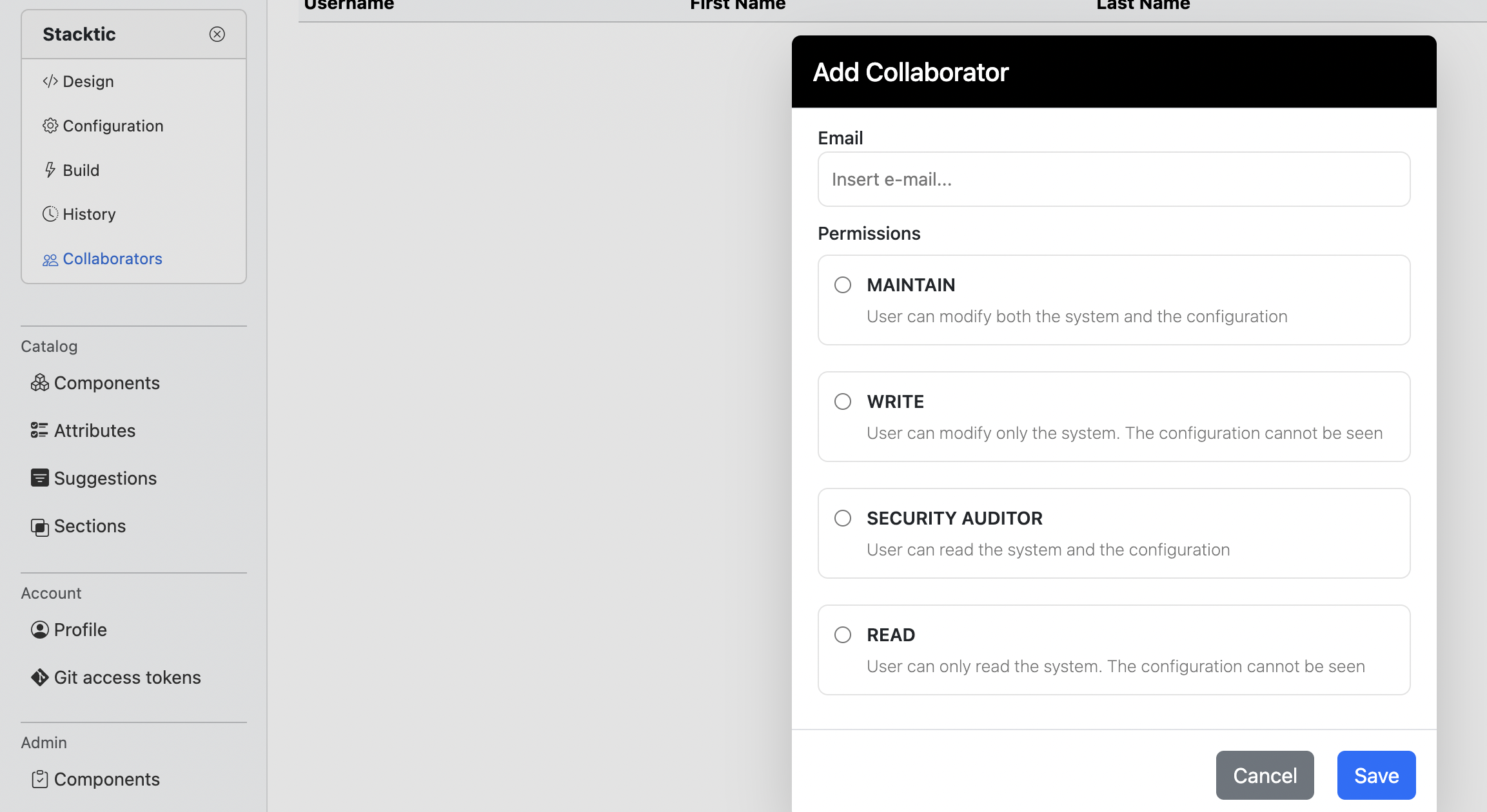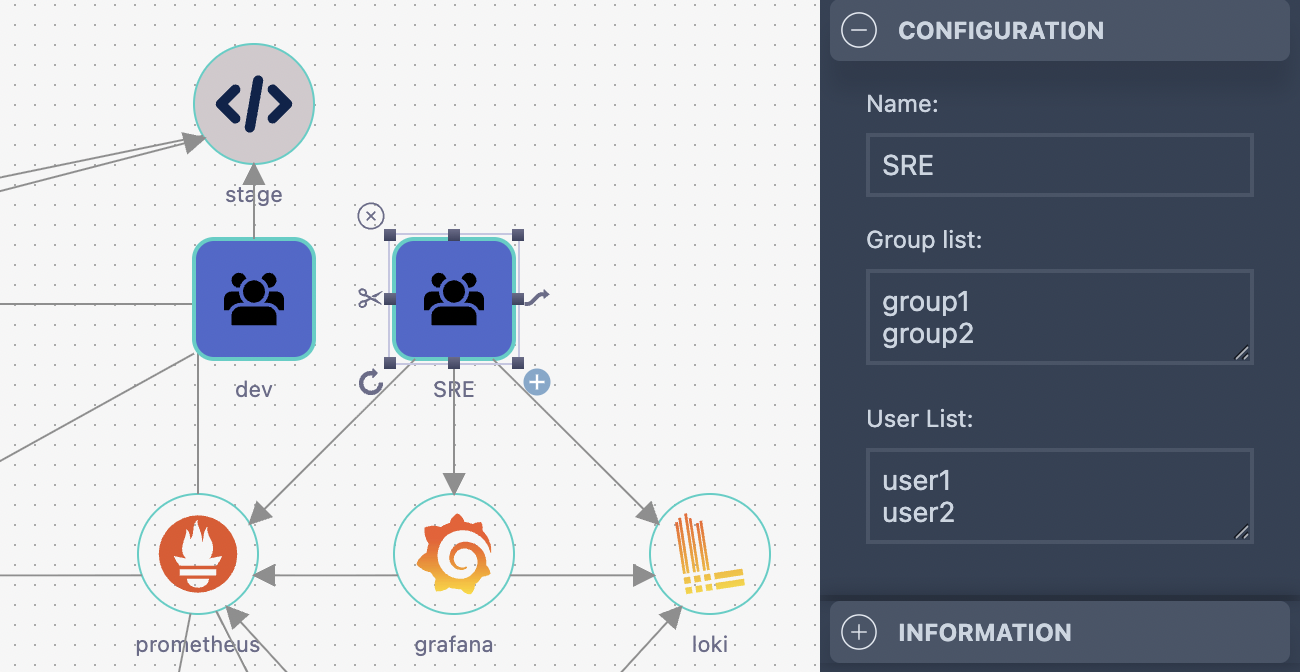🧱 Stack Access & Permission Model
🎯 Vision & Philosophy
At the core of our design, we believe in automated, strict security enforcement at the stack level, while maintaining operational freedom as much as possible for those who build, deploy, and maintain the stacks.
In other words:
We believe in securing the stack layers, not nessarcily the org operators layers.
However, we also recognize that organizations have compliance and regulatory requirements, so we provide a hierarchical permission model that is both flexible and strictly controlled lime never before.
🔐 Permission Levels
When creating a stack, you can add collaborators under four permission levels:
| Permission | Description |
|---|---|
| MAINTAIN | Full access — can modify both the system and the configuration. |
| WRITE | Can modify only the system. Configuration details remain hidden. |
| SECURITY AUDITOR | Read-only access to both the system and configuration (for compliance or auditing). |
| READ | Read-only access to the system; configuration cannot be viewed. |

🧩 Layer 2: Stack Hierarchy
The second layer introduces a unique hierarchical stack model:
- Each team (e.g., DataOps, SecOps, Dev) can create and manage their own sub-stacks.
- A designated Stack Admin can unify multiple sub-stacks into a single master stack.
This structure solves a major issue with monolithic repositories — it allows teams to maintain independence and security per stack, while the admin merges them into a single production-ready stack.
Think of it as multi-stack collaboration with single-stack deployment.
🧾 Layer 3: Action Logs (TBA: 1/11/2025)
Every user action within the system is logged and auditable. This provides:
- Full traceability of modifications
- Transparency in collaboration
- Clear accountability across teams
🔗 Layer 4: RBAC Integration (Kubernetes Level)
Finally, our security chapter introduces Kubernetes-native RBAC linkage:
- Each stack component can link to kubectl RBAC roles directly.
- Access can be tied from sub-component user/groups to specific components.
This ensures fine-grained access control that aligns perfectly with your cluster’s RBAC policy.

⚙️ Summary
| Layer | Purpose | Outcome |
|---|---|---|
| 1. Permissions | Define collaborator access | Clear role-based boundaries |
| 2. Hierarchy | Unify sub-stacks | Secure multi-team collaboration |
| 3. Action Logs | Record all user activity | Full visibility & auditability |
| 4. RBAC Mapping | Integrate with K8s security | End-to-end access enforcement |
In short: Our model lets you decide how strict your organization’s security should be — from flexible collaboration to fully locked-down compliance mode — all backed by transparent logging and RBAC-level enforcement.